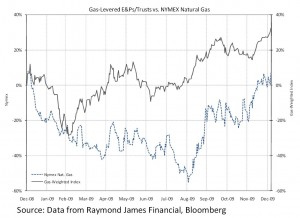 Portfolio Manager at Trivest Wealth Counsel” width=”150″ height=”150″ />
Portfolio Manager at Trivest Wealth Counsel” width=”150″ height=”150″ />
Biography: Martin has over 12 years of experience in the investment and finance sector providing extensive financial modeling and fundamental analysis on commodities, sectors, and individual equities. This also allowed for the establishing of senior management and board level relationships among those in the Canadian and International energy sector as well as providing regular investment advice and recommendations to both retail and institutional clients in Canada, the US and Europe.
More recently, Martin was an Investment Banking Consultant at Petersen Capital Corp., undertaking corporate finance advice to private and public companies in the energy, mining, technology and financial service sectors. Previous to his consulting work, Martin spent the majority of his career in equity research including the following: Director, Energy Research at Blackmont Capital, the capital market arm of CI Financial; Energy Analyst and Associate at Canaccord Capital; and, Equity Research Associate at GMP Securities. Martin began his career at the Bank of Nova Scotia as a Registered Representative providing investment advice to high net worth clients in a branch office in Edmonton.
Martin holds a Bachelor of Commerce degree with a specialization in finance from the University of Alberta and is a Chartered Financial Analyst (CFA) Charterholder. He is a member of the Calgary CFA Society. Martin is currently a Managing Director and Portfolio Manager at TriVest Wealth Counsel, client-focused wealth management firm offering custom tailored investment solutions for private clients, corporations, trusts, estates, endowments and foundations.
Q: Mr. Pelletier, in a general sense, what is your opinion of the markets (in terms of inflation/deflation, valuations and risk) at the moment? In addition, how have you positioned your portfolio to take advantage of this view?
A: We are most concerned about leverage levels that appear to be a global problem not just a U.S. one, and that if history repeats itself we are about to enter into a prolonged deleveraging period. In particular we came across a great report by the McKinsey Global Institute, in which its research has indicated that deleveraging has followed every major financial crisis in the past half-century, with a total of 45 episodes of deleveraging since the Great Depression. During this period, the ratio of debt to GDP declined on average by 25% over a six to seven year period, and 32 of them followed a financial crisis. This decrease represents a massive $10 trillion in debt reduction.
Another potential issue is that it could prove challenging to see how all of the effected economies could simultaneously deleverage by boosting net exports, as many countries have done in the past. In particular, we find it troubling to put all of our hopes for a global recovery on the continued growth coming from emerging countries such as China. That’s a lot of eggs in one basket.
Overall, we believe the equity market valuations appear to be factoring in little downside risk and stocks are fully priced. Roughly 85% of S&P 500 stocks are now above their 50-day moving averages and are setting new 52-week highs. The median P/E multiple is now 22.2x versus a historical average of approximately 16.2x. There were a lot of events this past week, for the most part indicating that we are not quite yet out of the woods – and the equity markets responded accordingly. In particular, we’ve noticed that both analysts and economists have been over optimistic with their estimates, setting the stage for some disappointing results.
We also have concerns about bonds given their relatively low yields, and exposure to rising interest rates. We think this risk is only partially reflected in the yield curve, as a rush of money seeking income has bid up bond prices that we believe are not properly reflecting the current market risks. We are also beginning to see interest rate pressures in the rapidly growing emerging markets, and believe that ultimately it’s not a matter of if but more of when the U.S. Fed will respond as it unwinds its fiscal and monetary stimulus. Therefore, in our view, investors should exercise caution in regards to the duration of their bond portfolios.
Given the market environment, we believe it has never been more important for investors to seek professional advice in managing their portfolios as well as setting realistic objectives. We have been very busy over the greater part of 2009 conducting extensive market and equity research, which has greatly assisted us in determining target asset allocation weightings within our client investment objectives. For example, we currently have a large cash weighting, a low duration in our bond portfolio, and actively using our risk-management tools in our equity positions such as the use of options to provide income as well as effective trading strategies that provide some downside protection.
We are undertaking an appropriate amount of time in selectively adding equity positions based on market opportunities. We have also been taking advantage of our extensive contacts among the Energy sellside, industry professionals as well as senior management teams resulting in a few small tactical oil and gas junior and mid-cap trades to add some beta to our client portfolios.
In order to offset our conservative positions we have also been able to generate a strong annualized dividend yield for our clients from our Canadian equity model portfolio. Our option writing has also been generating incremental income for our client portfolios.
Q: With the run-up in Nymex natural gas futures from around the $2.50/mmbtu level to the $5.8/mmbtu level it is currently trading at, what are your thoughts going forward for this natural gas?
A: At this point in time, we are not too optimistic about natural gas prices in the mid-term, and believe the forward curve is properly reflecting current fundamentals. My how things have changed in the past 10 years, as it wasn’t so long ago that pundits were fretting about a shortage of natural gas on the continent. So confident were these concerns that as a result there has been a total of $9 billion of new LNG projects built over the past 4-5 years, and U.S. LNG re-gasification capacity has increased to 17 bcf/d up from 5 bcf/d in 2006. To put this into perspective, the U.S. currently is importing only 0.75 bcf/d of LNG. The 17 bcf/d of capacity also represents 31% of total U.S. production, 240% of Canadian exports to the U.S., and roughly 28% of total U.S. demand. Therefore it isn’t much of a surprise when you hear of plant conversions from re-gas to liquefaction, such as the Kitimat LNG terminal on the Canadian west coast. The question is how many more of these facilities will be converted, and when will natural gas be priced as a global commodity?
In regards to natural gas levered producers, many have outperformed the commodity in regards to their share price appreciation over the past year. Therefore for those still looking to play the seasonal gas-trade simplistically, we recommend owning the commodity itself rather than equities. That said, this is where bottom-up due diligence comes in handy as through our analysis, we have identified and personally met with some fundamentally sound E&Ps as well as service companies that are trading well below many of their peers, and/or have some exciting near-term operational catalysts.
Q: Mr. Pelletier, with crude oil hovering at approximately $74-75/barrel, do you think these price levels are sustainable for the next 1-2 years, why or why not?
A: We also believe that the forward curve for crude oil prices is likely properly reflecting the underlying fundamentals. Demand forecasts have been revised up slowly with the global economic recovery while new supplies have been somewhat modest. We’ve recently read that non-OPEC production will begin to fall due to few start-ups and increasing decline rates. Regarding OPEC, capacity utilization is expected to be reached by 2011/2012 as a result of recent trends of poor delivery and increasing decline rates. This is leading to the need for demand rationing pricing, even should ambitious Iraqi targets be achieved. All of that said, prices could be at risk should global economies falter in their recovery, and equity markets sell off. All boats sink in falling tides. We think that this considered, overall there is a greater risk to the downside than upside. That is why we tend to favour those oil producers who have hedged out a meaningful amount of their production volumes.
Q: What is your outlook for M&A activity in the energy sector? Do you have any plays (as in the bakken, montney, cardium etc.) or particular stocks that may be particularly susceptible to M&A activity?
A: It’s been a busy few months in the natural gas sector, with some large deals announced. In December, Exxon Mobil announced that it is buying unconventional natural gas company XTO Energy for $41 billion and this past week France based Total SA announced that it is paying US$2.25 billion to buy a 25% stake of Chesapeake Energy Corp’s Barnett Shale play. Suncor also announced this past Tuesday that it is selling its U.S. Rockies division to Houston-based Noble Energy for US$494 million.
Other than a few smaller corporate transactions such as the sale of Berens Energy to Petrobank, there haven’t been many M&A undertaken north of the border. We believe that this is the case as many buyers are keeping their powder dry given the supply of asset sales to market. For example, Suncor is still targeting to sell $2 to $4 billion in natural gas assets this year, and Cenovus Energy is looking to shed $1 billion of natural gas assets over the next two years. In our view, this should continue to put somewhat of a low ceiling on corporate valuations for Canadian conventional natural gas producers especially considering the rebound in their share prices. In addition, asset deals are typically a lot cleaner and therefore often more desirable than corporate deals.
On the whole, we still do not see much value left in natural gas stocks as they have significantly outperformed natural gas prices. The following chart is a market-cap weighted index of 27 gas levered junior, intermediate, and income trusts.
This group of companies have seen their share price increase by 32% since December 31, 2008 compared this to NYMEX gas prices that are up only 6.9% over the same period.
That said, the disparity between low natural gas prices and relatively strong oil prices has pushed both investors and acquirers towards oil weighted companies. Companies with established light oil plays in the Bakken or Lower Shaunavon in Southwestern Saskatchewan, the Cardium in Western Alberta, as well as those participating in the Montney and Horn River natural gas plays in NE BC and NW AB have commanded strong premium multiples. In many circumstances the acquisition of a company operating in these regions has offered a means to increase or establish a position albeit at a hefty price. For example, some conventional producers are trading at a four times forward cash flow while some operating in the aforementioned regions are trading at a 10 times forward cash flow.
In regards to acquisition prices, we read an interesting article this past week entitled “Determining oil and gas valuations” in the Financial Post. It references a report by Peters & Co., a Calgary based securities firm that is an oil and gas boutique, which showed that the average purchase price for oil-weighted production in Q4 2009 was $100,000 per boe/d (6:1 barrel of oil equivalent per day). This is up from the average $60,000 per boe/d in Q3 2009. More importantly this compares to the average purchase price for natural gas-weighted production in Q4 2009 $54,700 per boe/d and $35,000 in Q3.
Overall, there was a significant increase in Q4 2009 in regards to the average purchase price paid for production and reserves, increasing approximately 44% and 47%, respectively.
Specifically, intermediate sized producers and income trusts (>25,000 boe/d) are trading at approximately $83,500 per boe/d and $20.30 per boe, mid-cap producers (10,000-25,000 boe/d) at approximately $75,500 per boe/d and $15.68 per boe, and small-call producers (<10,000 boe/d) at approximately $72,550 per boe/d and $19.85 per boe. Therefore according to these metrics, there appears to be little to no take-out premiums left in these equities.
Lastly, in the aforementioned “Determining oil and gas valuations” article, it provides a great synopsis of how acquiring companies derive a take-out value. In particular they look at the target company’s reserves and would pay 90-100% of the base independent engineering value and then some percentage (~25-35%) of the evaluated risked upside of the undeveloped reserves not in the engineering report.
According to our analysis using First Energy data, Canadian oil and gas producers are trading at approximately 1.7 times their net asset value from their most recent reported year-end reserves (2008 for many), with oil levered companies trading at 1.8 times and gas levered trading at 1.6 times. Overall, when valuing Canadian intermediate, mid and small cap oil and gas levered producers on a take-out basis the sector appears to be overvalued.
Thank You, Mr. Pelletier!











